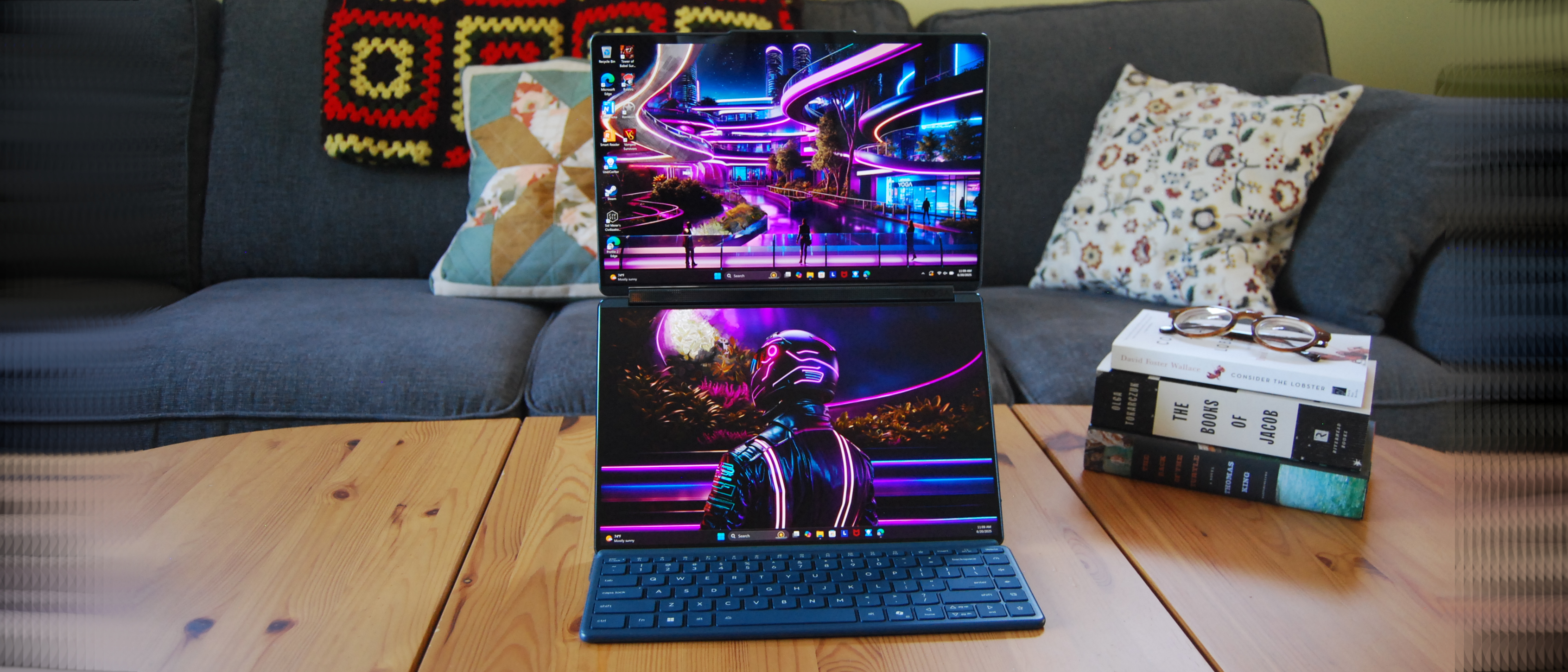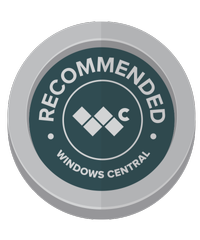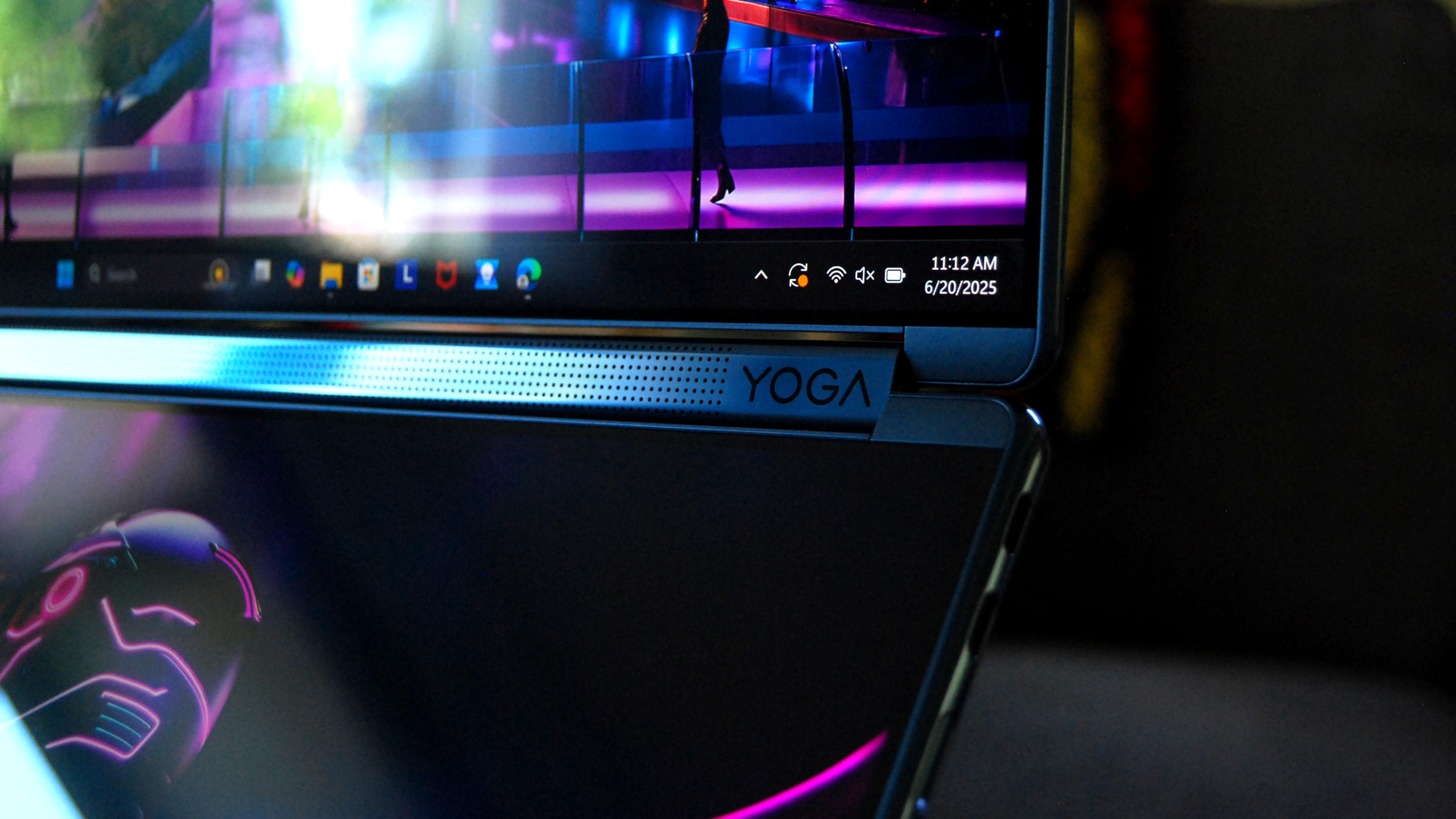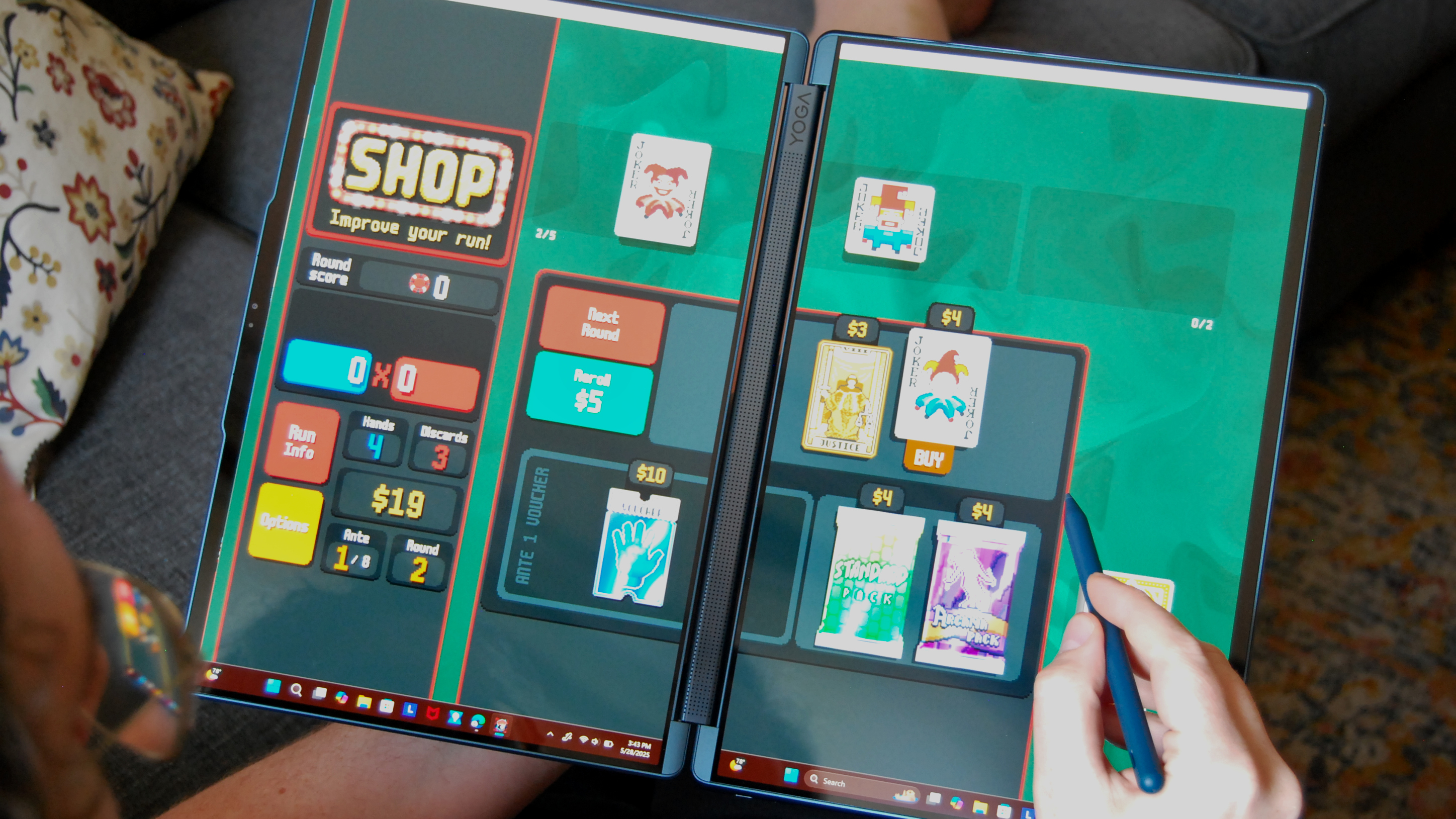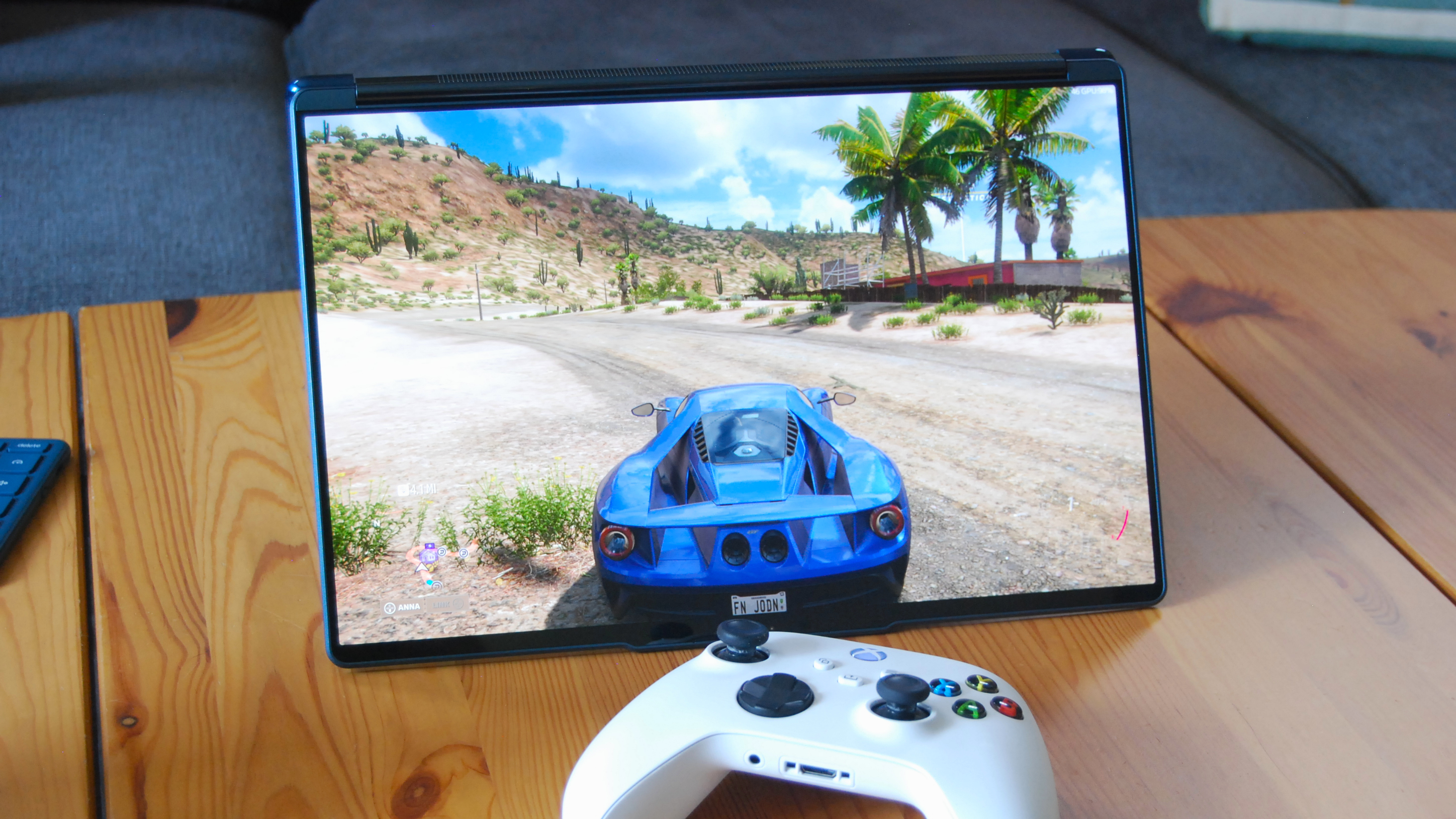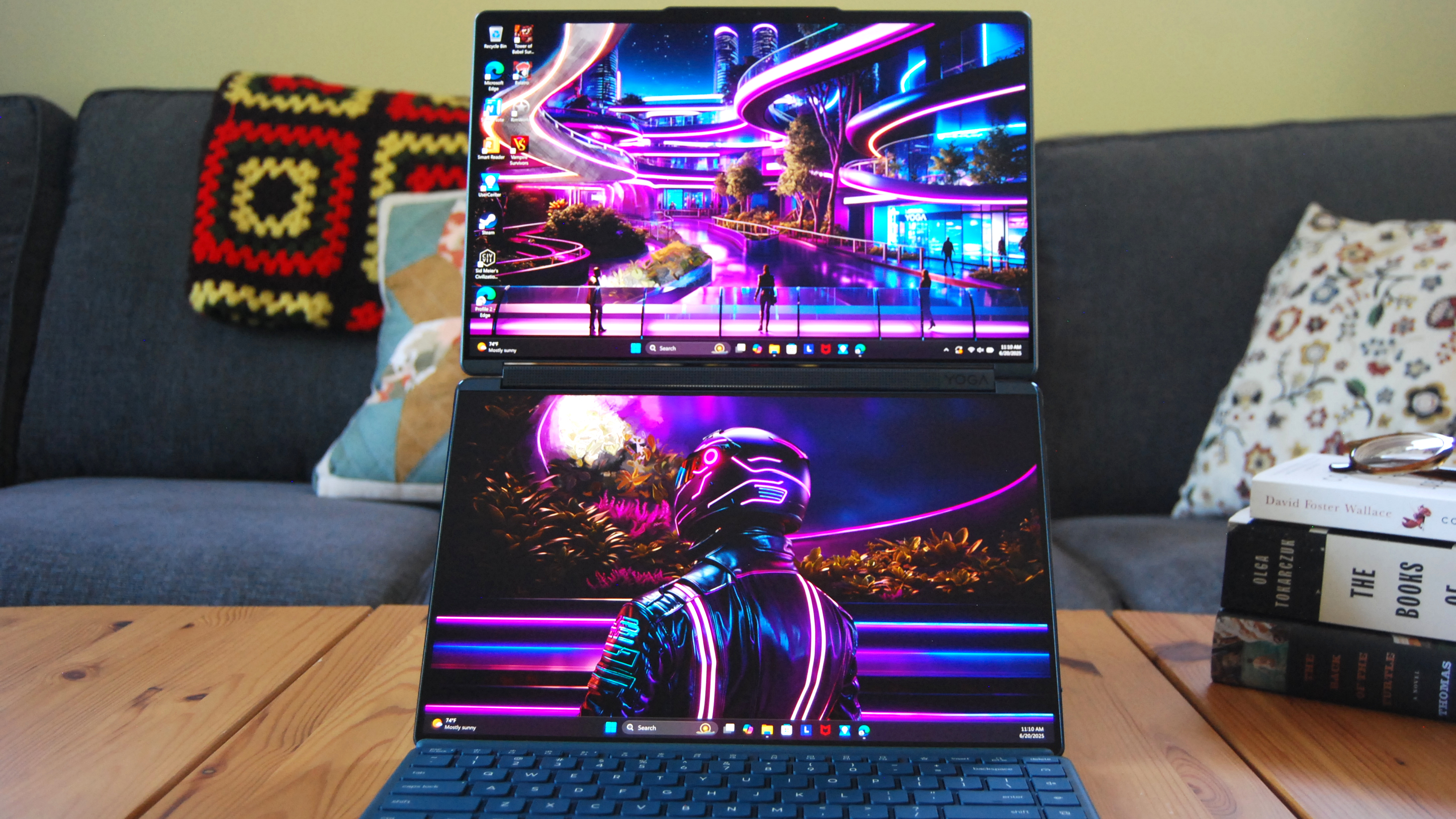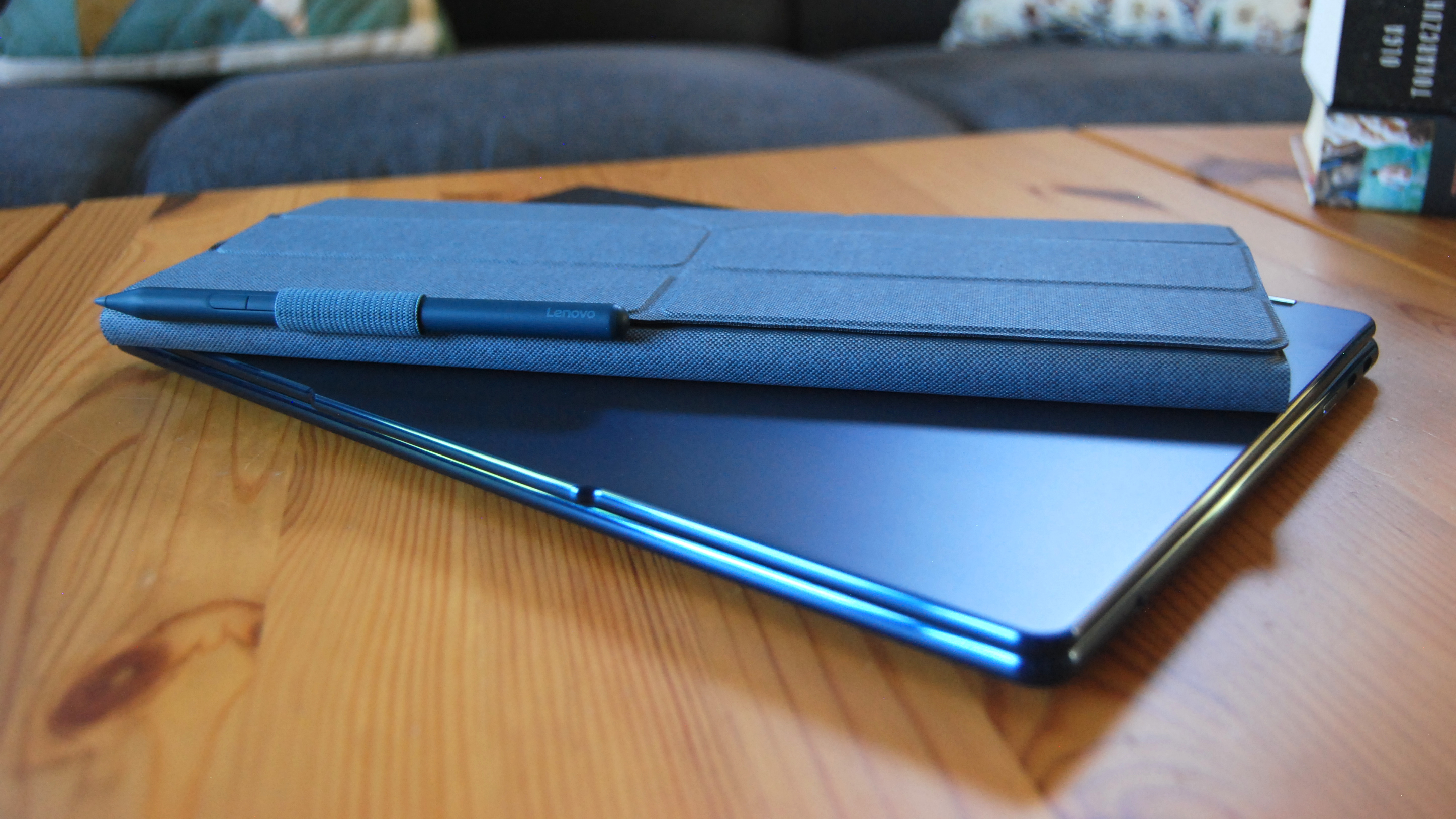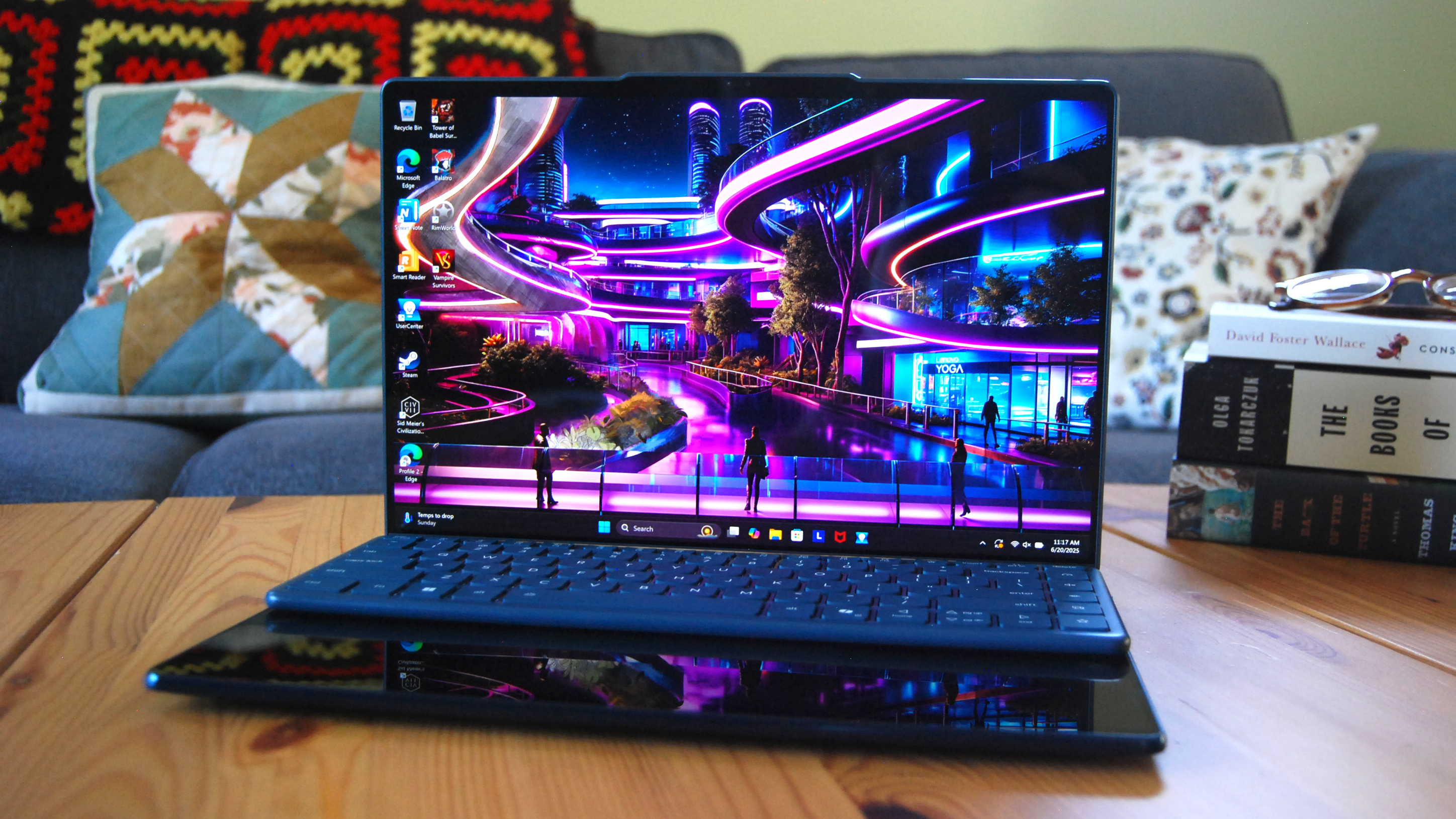Windows Central Verdict
Lenovo's dual-screen Yoga Book 9i (Gen 10) continues to lean more into style than functionality, and I'll continue to recommend the ASUS Zenbook Duo for professionals and multitaskers. For everyone else who prefers a more premium, sleek design that's incredibly versatile, the Yoga Book 9i is standing by.
Pros
- +
Lenovo's premium design prowess is on full display
- +
Dual 2.8K OLED screens are beautiful
- +
Supporting dual-screen software is very useful
- +
Typing is comfortable, and there's now a backlight
- +
Performance and battery life are solid
Cons
- -
A lot more expensive than the ASUS Zenbook Duo
- -
No physical touchpad continues to be a nuisance
- -
Additional accessories add baggage when you're on the move
- -
Some dual-screen system quirks need addressing
Why you can trust Windows Central
The dual-screen laptop market has always been limited, and for good reason.
Dual-screen laptops generally cost more than their standard counterparts — two screens, additional engineering resources, and extra hardware don't come free — and average users often don't see the need to add more screen space in a device that's meant to be used primarily on the go.
That hasn't stopped ASUS and Lenovo from forging ahead with what are realistically the only two dual-screen laptops you can buy these days. ASUS has its Zenbook Duo, which I reviewed earlier this year, and Lenovo has the Yoga Book 9i.
I switched my workflow to the Lenovo PC for the better part of a month to really get a good idea of what it's like to use on a daily basis, and I'm here with a promised review after my Yoga Book 9i hands-on and follow-up dual-screen gaming experience coverage.
I've come to the conclusion that the Yoga Book 9i is the best dual-screen laptop from a design and aesthetic standpoint, but that doesn't mean it's the best dual-screen laptop for you. Here's why.
This review was made possible thanks to a review unit on loan from Lenovo. It had no input on the content of this article, nor did it see the review prior to publishing.

I've been reviewing laptops since 2016, and more specifically, I've thoroughly tested all of the dual-screen laptops that are on the market today. If you'd like to know what the Yoga Book is really like to use on a day-to-day basis, I can help.
From an aesthetic standpoint, the Yoga Book 9i (Gen 10) is an easy winner
The Yoga Book 9i (Gen 10) is a showcase of Lenovo's engineering prowess. I'd be lying if I said this isn't one of the finest Windows laptops I've ever used.
Lenovo's modern Yoga design language is on full display. The stainless magnesium chassis is die-cast with rounded edges and soft corners; there's a raised comms bar along the top of the lid, and the laptop is thin despite featuring dual OLED displays.
All the latest news, reviews, and guides for Windows and Xbox diehards.
Without the keyboard and stand attached (more on that below), the laptop weighs just 2.69 pounds (1.219kg) and measures only 0.6 inches (15.5mm) thin.
I'd be lying if I said this isn't one of the finest Windows laptops I've ever used.
A rotating soundbar hinge housing dual 2W speakers, a feature from Lenovo's traditional flagship laptop, the Yoga 9i, makes an appearance here.
The 360-degree design allows sound to flow directly toward you, no matter how you're using the PC. The tweeters are joined by dual 2W woofers, one on either side of the bottom panel, and everything is optimized with Dolby Atmos.
• CPU: Intel Core Ultra 7 255H, Intel Core Ultra 9 285H
• Graphics: Intel Arc 140T (integrated)
• RAM: 16GB, 32GB LPDDR5x-8400 (soldered)
• NPU: Intel AI Boost, 13 TOPS
• Storage: 512GB, 1TB M.2 PCIe 4.0 NVMe SSD (upgradeable)
• Display: 2x 14 inches, 2880x1800 (2.8K), touch, OLED, 750 nits peak (HDR), 500 nits (typical), glossy, 120Hz refresh rate, Dolby Vision, DisplayHDR True Black 600
• Pen: Lenovo Yoga Pen, 4,096 levels of pressure sens., tilt detection
• Wireless: Wi-Fi 7, Bluetooth 5.4
• Battery: 88Wh
• Audio: 2x 2W tweeters (soundbar hinge), 2x 2W woofers (bottom), Dolby Atmos, Smart AMP
• Camera: User-facing 5MP + IR, privacy shutter, Human Presence Detection
This unique audio setup is impressive in its capabilities. Whether listening to music, watching a movie, gaming, or jumping into a video meeting, I had no problems in terms of volume and clarity.
The 5MP webcam is just as impressive as the audio hardware. While its resolution is bested by many other PCs, whatever Lenovo is doing behind the scenes is working.
The camera does a bang-up job of handling different light levels, keeping me looking crisp in weekly video meetings. It's joined by an IR sensor for Windows Hello, adding a layer of facial recognition security.
It also offers human presence detection (HPD) abilities, which are both convenient and secure. Lenovo's Vantage app has several zero-touch options for different PC modes — clamshell, book, tent, tablet — with settings for automatic login, automatic lock, and automatic video playback.
This is the first PC that has allowed me to adjust the (HPD) sensitivity and timing to help prevent the laptop from scanning anything that walks by, and it's also the first I've used with the ability to pause and play videos when I depart or approach. It all works flawlessly.
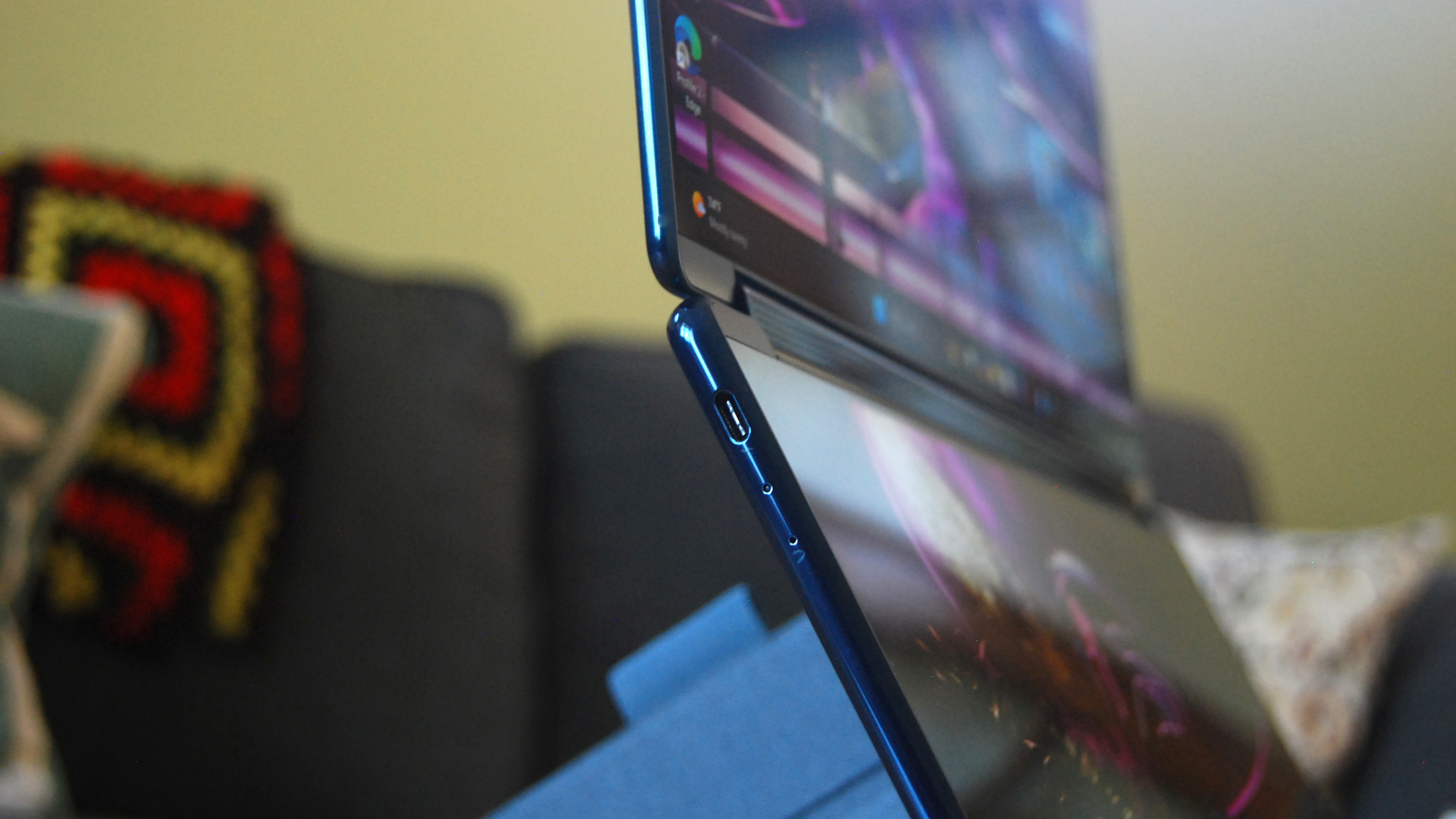
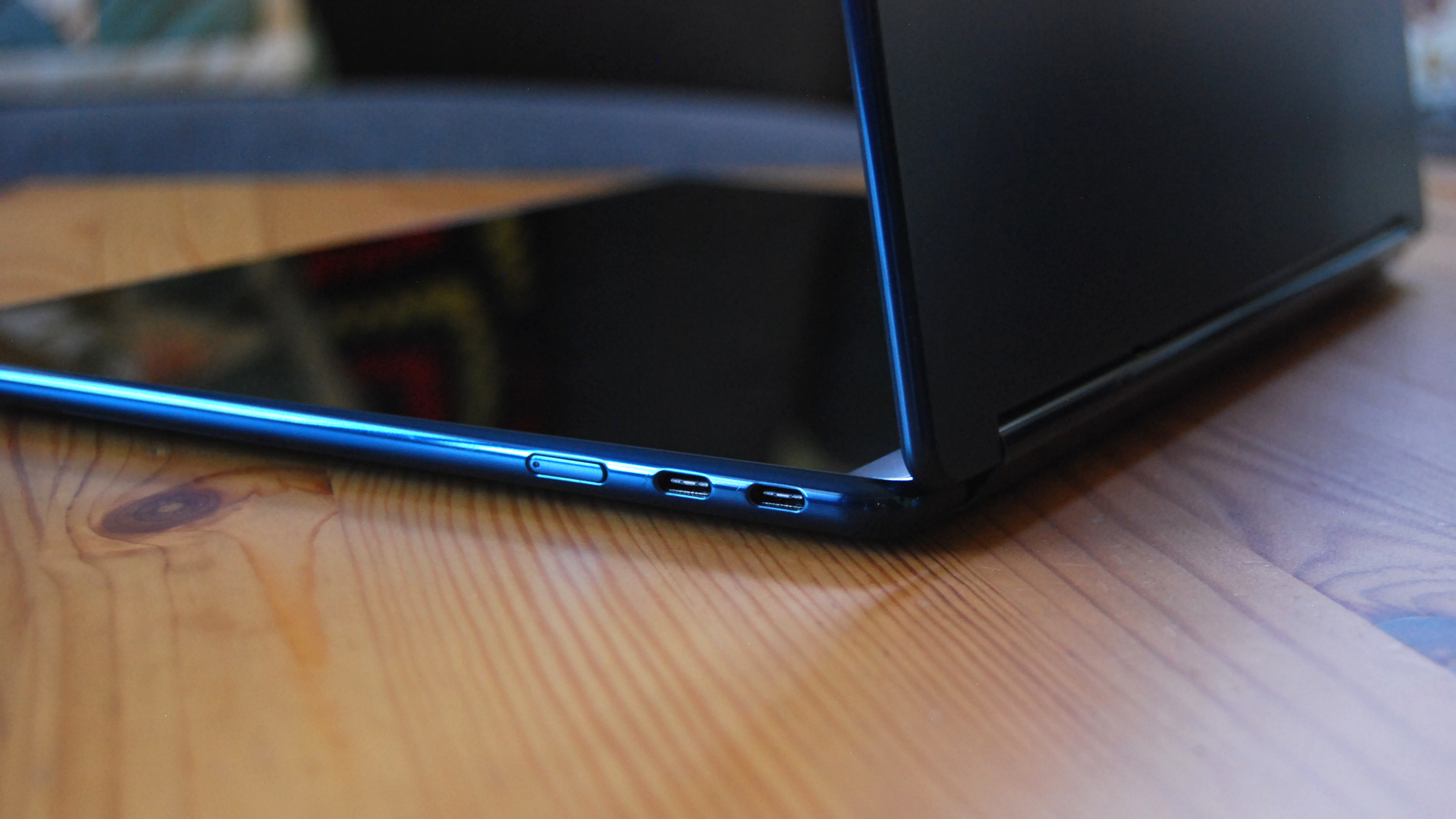
Port selection is one of the Yoga Book's weaknesses. The PC has just three inputs, and they're all USB-C with Thunderbolt 4 certification.
That's the standard you want for your ports — Thunderbolt 5 is out, but it hasn't gained much traction yet — the lack of anything but will cramp some workflows.
Yes, the PC is cutting-edge with the latest wireless standards (including Wi-Fi 7 and Bluetooth 5.4), but not having a 3.5mm audio jack is a notable omission.
Intel's Core Ultra "Arrow Lake" chips are the right choice
The Yoga Book 9i (Gen 10) runs on either an Intel Core Ultra 7 255H or Core Ultra 9 285H processor from the "Arrow Lake" lineup. These chips include a rather impressive Intel Arc 140T integrated GPU, which I tested out previously.
Despite having no visible vents to keep the laptop cool — they're hidden in the base portion's hinge cutout — the Yoga Book was able to run Forza Horizon 5 at an average of 48 FPS with a 2.8K resolution on High settings with ray tracing enabled.
That's far better than I was expecting. And once I discovered that I could play Balatro on both screens at the same time, holding the laptop like an open book, I had a grand time operating with the included active pen.
To me, the Yoga Book's premium design suggests a more casual, entertaining life, so it's great that it's able to keep up with a lot of games.
The biggest drawback to these Intel chips, at least for those hoping to run Windows 11's Copilot+ AI tools, is a lack of a powerful Neural Processing Unit (NPU).
The PC easily managed everything from heavy web browsing and streaming to photo editing and video conferencing without breaking a sweat.
The Yoga Book 9i is certainly an AI PC — Lenovo advertises it as having a combined total of 99 TOPS with the CPU and GPU factored in — but its Intel AI Boost NPU caps out at 13 TOPS, far below the 40 TOPS cutoff set by Microsoft.
My review unit has the less-powerful Core Ultra 7 chip in it, but at no time did I yearn for the beefier Core Ultra 9 option.
The PC easily managed everything from heavy web browsing and streaming to photo editing and video conferencing without breaking a sweat. Keep in mind that I often used both screens simultaneously.
Both Intel CPUs have the same 16 cores split up between Performance, Efficient, and Low-Power Efficient designations, with the difference coming in clock speeds.
You can configure the Yoga Book with up to 32GB of LPDDR5x-8400 RAM, which comes soldered and is thus non-upgradeable. There's one M.2 slot inside for storage, and Lenovo offers 512GB and 1TB capacities.
Storage could likely be upgraded after purchase, although the PC has no visible screws and might not be easy to get into without damaging something.
The Yoga Book 9i (Gen 10) runs on a sizable 88Wh battery, larger than you might expect for a laptop so slim. My Windows Battery Report is skewed a bit due to how much gaming I was doing on battery life, but the outlook remains optimistic.
While enjoying Balatro across both screens on DC power, I was only seeing about a 10% battery drain per 30 minutes of playtime. That equates to about five hours of life while gaming on two screens, which is more than good enough for me.
I've been taking advantage of warm weather, working outdoors in the garden with screen brightness maxed out. Considering I was able to pick the laptop up three days in a row without charging and get a few hours of work out of it, I'd say Lenovo has a PC that can go for a full workday on a charge.
Lenovo includes a few battery settings in its Vantage app, allowing you to adjust power profiles (adaptive power mode seems to work well), battery charging conservation limits, and an overnight charging mode that ensures the laptop is always topped up for the morning.
Dual screens, and how Lenovo wants you to use them
Lenovo's dual 14-inch OLED displays are the best part of this laptop. They each have a crisp 2.8K resolution, an adaptive refresh rate from 60Hz to 120Hz, Dolby Vision and DisplayHDR True Black 600 certification, and plenty of brightness.
Lenovo lists brightness at a maximum of 500 nits without HDR enabled, but it's able to climb to 750+ nits in HDR content. As mentioned, I spent a lot of time outdoors with this PC, and its displays were bright enough to combat the sun despite a glossy finish.
Lenovo's dual 14-inch OLED displays are the best part of this laptop.
The included active pen feels great when writing notes (or gaming), and the standard touch functionality is flawless. That's a good thing on a laptop without a physical touchpad.
That brings me to the most important aspect of this laptop: how it works in dual-screen mode.
The Yoga Book 9i (Gen 10) is set up to operate optimally only with add-on accessories that come included with the PC. Beyond the active pen, you get a stellar wireless Bluetooth keyboard — now with a backlight! — that snaps magnetically into place onto the bottom display.
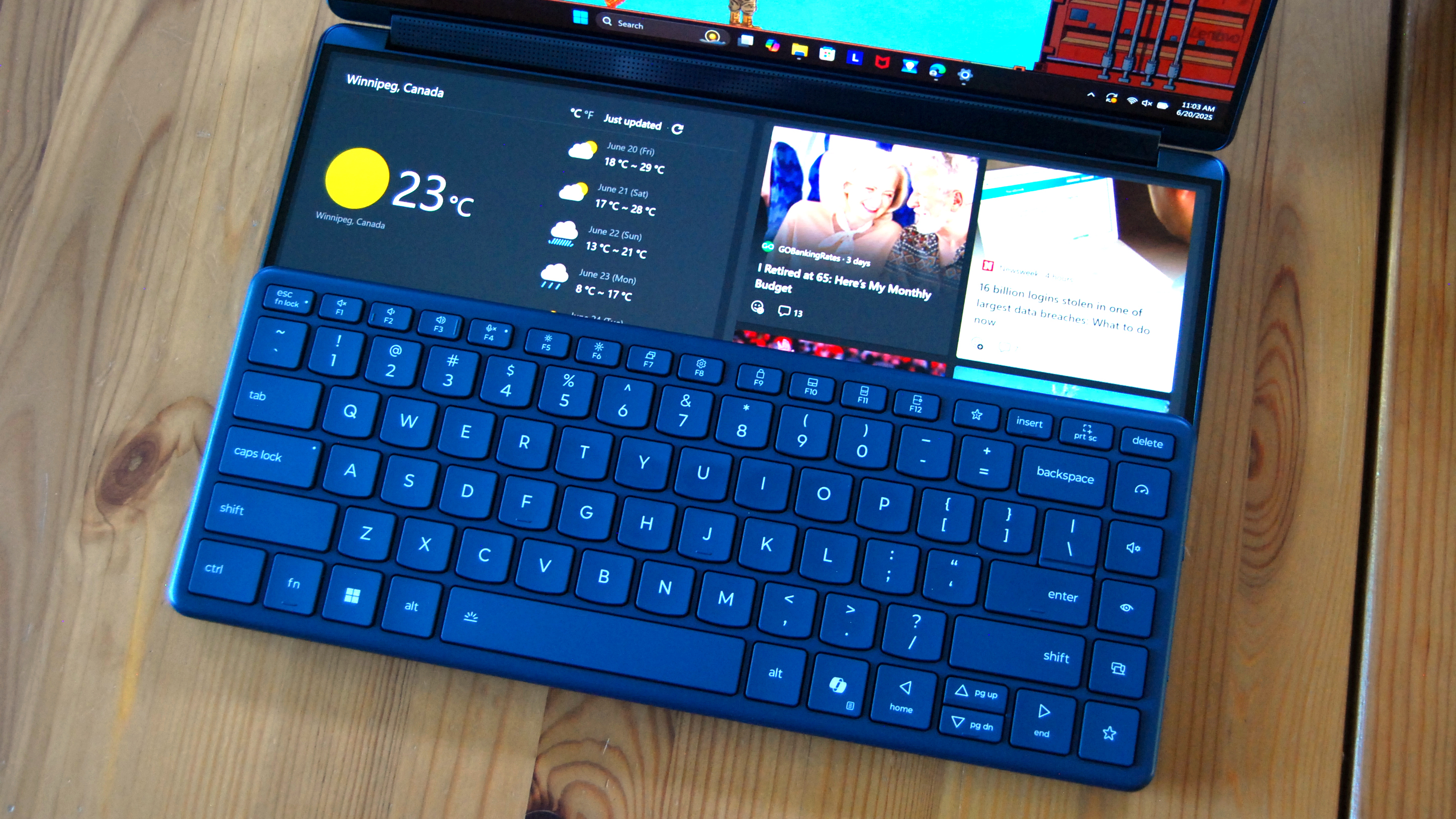
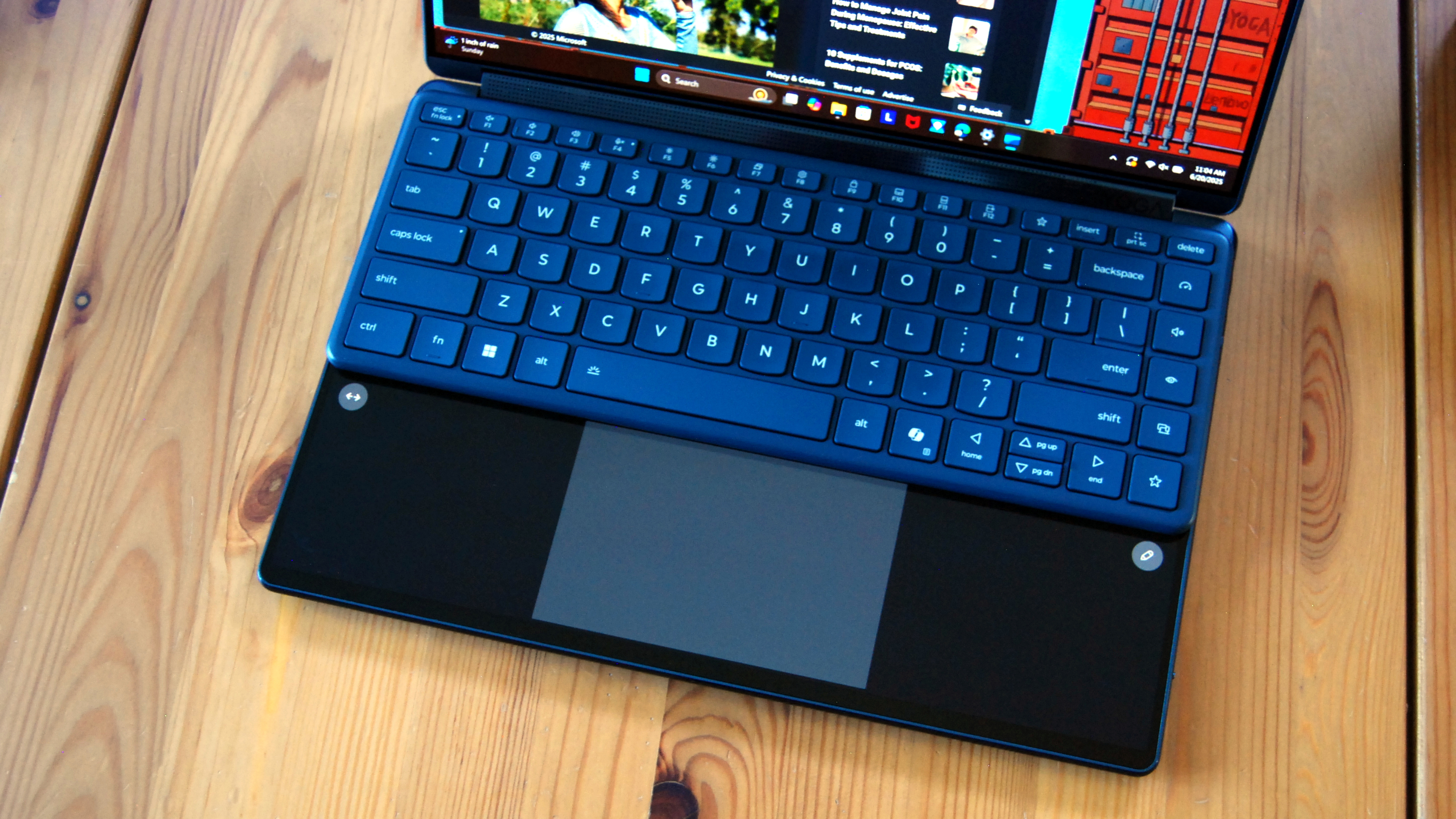
If at the top, a digital touchpad appears below, emulating a standard laptop. If at the bottom, customizable widgets appear in the remaining display.
The digital touchpad works a lot better than I was expecting. A lack of haptic feedback is a tad jarring at first, but Lenovo makes up for it with a number of additions, like full half-screen touch and a note section for the active pen.
Lenovo's included dual-screen specialized software is quite effective at managing shortcuts and features, and, ultimately, I found it easy to organize windows across both displays. Like the Zenbook Duo, dual-screen functionality isn't perfect.
One thing that certainly irks me is that the mouse cursor isn't bound to the top screen when the keyboard is attached. I don't know how many times I lost the cursor beneath the keyboard or saw it floating atop the digital touchpad. It's about the only thing that reminded me I was using a dual-screen laptop when in notebook mode.
The other major accessory is a folding "origami" stand that's used to set the laptop up in dual-display mode. It provides a sturdy foundation for vertical or horizontal orientation, and it has an elastic loop to house the active pen.
Here's where the Yoga Book 9i sets itself apart from the Zenbook Duo. Because Lenovo focused on making a sleek, sexy PC first, the keyboard and stand travel separately from the laptop.
Yes, the bundle packs down with the stand wrapped around the keyboard, but you're always going to have that additional baggage with you.
What's worse, a lack of a physical touchpad — which the Zenbook Duo offers — means a wireless mouse is required when the PC is in dual-screen mode.
I understand that there are trade-offs for dual-screen laptops. You can't have a PC as sleek as the Yoga Book 9i without having external accessories tagging along. You also can't have accessories as integrated as in the Zenbook Duo without making it a lot chunkier and heavier.
While I prefer the chunkier integration of the ASUS PC, you might favor aesthetics over functionality, and in that case, it's the Yoga Book 9i I recommend.
The Yoga Book 9i is one fine dual-screen PC, but is it right for you?
The Yoga Book 9i is the best example of premium dual-screen laptop hardware available today, but that doesn't mean it's the best option for most people.
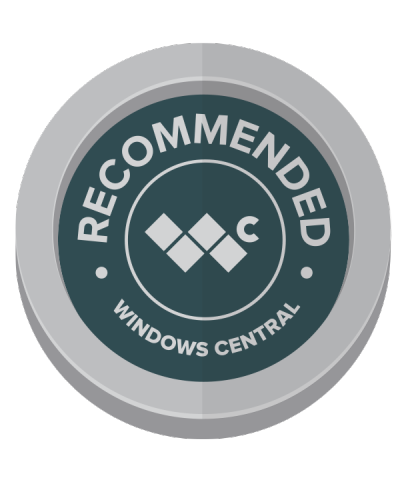
The Zenbook Duo's design, with an attached fold-out stand and keyboard/touchpad combo that fits between the screens when the laptop is closed, isn't as attractive or thin as the Yoga Book 9i, but it is more functional.
For busy professionals, it's the ASUS laptop that I recommend first. Especially because the Zenbook Duo with a Core Ultra 9 285H CPU, 32GB of RAM, and 1TB SSD currently costs $1,699.99 at Best Buy, while introductory Yoga Book 9i models with a Core Ultra 7 chip and half as much memory and storage start at $2,079.99.
For everyone else, including those who favor a PC that can deliver outstanding audio and visuals, the Yoga Book 9i is one sweet laptop. As long as you're comfortable with carrying around extra accessories separately, including a wireless mouse, it's a laptop I can recommend.
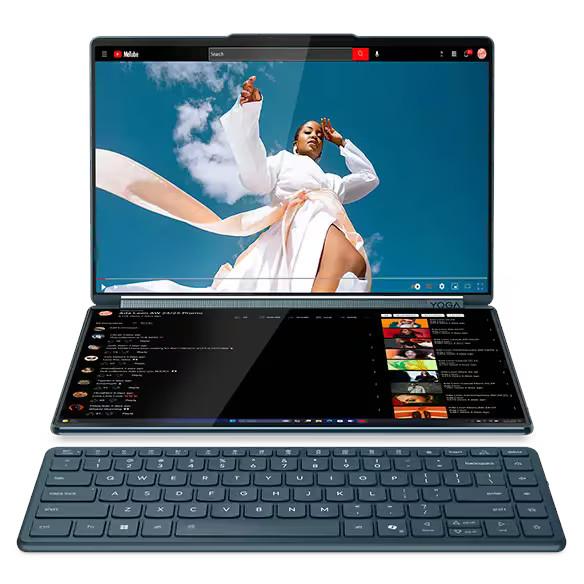
I've enjoyed my time with the Yoga Book 9i (Gen 10), but it leans too far into aesthetic appeal to compete with the functionality of the Zenbook Duo. I can still recommend it if you favor design and don't mind separate accessories, as well as a significantly higher price.

Cale Hunt brings to Windows Central more than nine years of experience writing about laptops, PCs, accessories, games, and beyond. If it runs Windows or in some way complements the hardware, there’s a good chance he knows about it, has written about it, or is already busy testing it.
You must confirm your public display name before commenting
Please logout and then login again, you will then be prompted to enter your display name.
